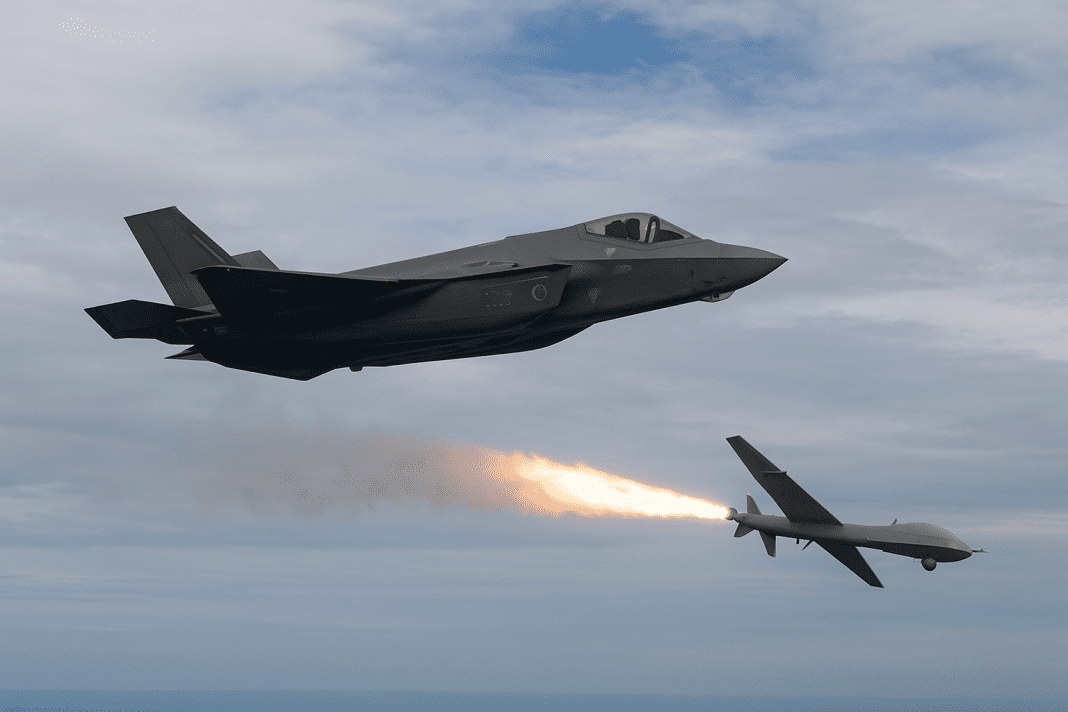A Dutch F-35 fighter jet has shot down a Russian drone near NATO’s eastern border in a major military incident. This action has raised immediate concerns about security in Europe, as the event is seen as a direct sign of growing threats to NATO’s airspace. The incident highlights the fragile situation along the alliance’s borders, where tensions have been steadily increasing.
Rising Tensions in NATO Airspace
The Dutch F-35 shoot-down is considered a rare and serious step. It took place close to one of the most sensitive areas of NATO’s defenses, making it a key turning point in the current security climate. NATO airspace has faced multiple risks in the past, but the downing of a Russian drone by an advanced fighter jet like the Dutch F-35 adds a new layer of seriousness to the situation.
This event underscores the increasing difficulty of protecting allied skies. It is no longer just about monitoring intrusions, but about actively responding to them. The fact that the drone was neutralized shows how quickly tensions can escalate when foreign aircraft enter sensitive regions. It has made both governments and markets more alert, with attention focused on how such encounters can influence both military and economic stability.
Greek-American lawmakers push Trump to reject Türkiye for F-35 program to protect NATO trust
Dutch F-35 Action and Military Escalation
The use of the Dutch F-35 in this situation was more than a simple act of defense. It carried a clear strategic message. The incident shows how closely Europe monitors its skies, with observers judging every movement for potential risks. NATO members viewed the presence of a Russian drone so close to their borders as a direct challenge, and they responded decisively.
This action highlights how easily Europe could face military escalation. Experts believe such events could push NATO to review its rules of engagement and strengthen its air defense systems. The incident may also prompt the alliance to monitor airspace across its eastern flank more closely. This shows how fragile the situation remains and how quickly a defensive measure can escalate into a larger step in military terms.
🇨🇭 Swiss outrage erupts as Trump slaps record 39% tariffs, shaking F-35 jet deal
NATO countries reacted by underlining the seriousness of the situation. Many believe these skies are no longer safe from intrusions. The Dutch F-35’s move therefore serves as a necessary measure to protect NATO members while also drawing attention to the risks that such actions carry. This makes it one of the most significant air defense events in recent times, with potential effects on security policy within the region.
Implications for European Markets and Policies
The Dutch F-35 incident also has strong effects on European markets and government policies. Investors quickly noticed the rise in risks, particularly in the defense and aerospace sectors. When military tensions rise, companies linked to defense production often see changes in demand and value. The shoot-down has added to this sense of financial uncertainty.
European markets are sensitive to any sign of instability. A single incident involving NATO and Russia can be enough to create shifts in investor confidence. The Dutch F-35 incident is one such example, as it has already led to speculation about increased defense spending by NATO members. This spending could mean more contracts for defense firms, but it also adds financial pressure to national budgets.
On the policy front, governments may respond by speeding up decisions related to air defense and security cooperation. Allied nations cannot take breaches of NATO airspace lightly, and they are likely to discuss measures that ensure quicker responses to such threats. This also means stronger cooperation on surveillance and technology across borders.
The political message of the event is also significant. It shows how one act, such as the downing of a drone by the Dutch F-35, can influence wider decisions in both military and economic areas. The incident is being studied closely as a case of how modern warfare risks connect directly with financial and political systems in Europe.

